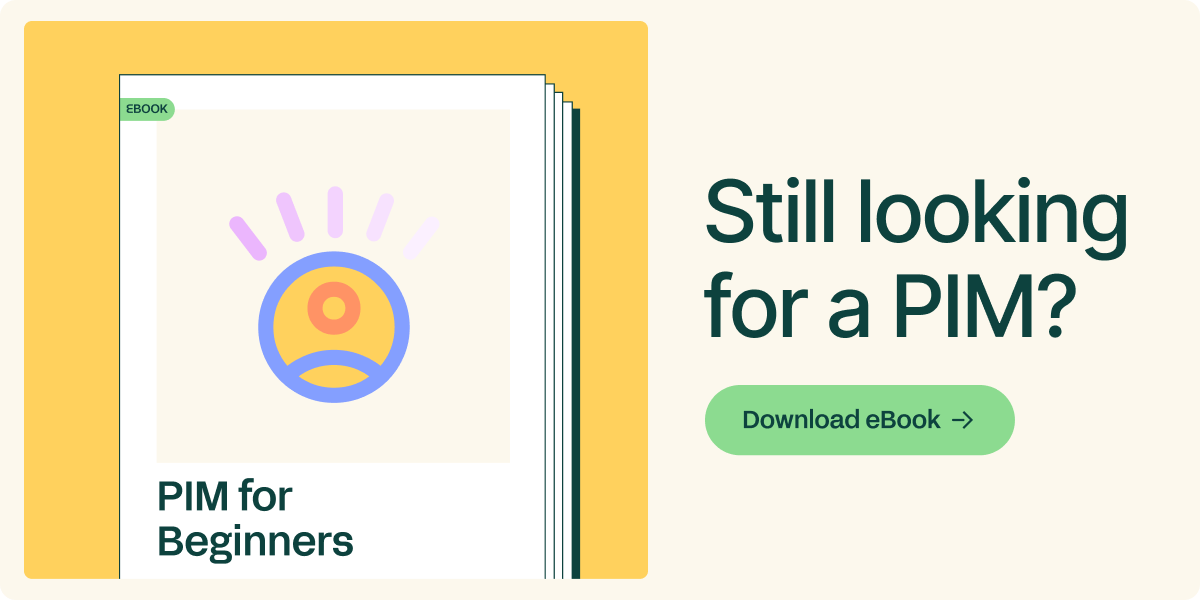
Entering into the online commerce area is a decision that can make you very successful, but it also has its risks, since a previous bad management can ruin our dreams, expectations and investment.
There is no magic formula for succeeding in e-commerce, but there are some aspects that you must have under control before starting. Here are 5 elements that should be well integrated with your plans to selling online.
1. Management, management and management
All the effort invested in organizing your e-commerce will serve you well once the online activity begins. And by investment we mean money and time.
If your intention is to have a broad portfolio of products; selling in your online store as well as in different marketplaces or there are several people handling the information from your e-commerce system, don’t hesitate to invest in a PIM system. A product information management will make life much easier for you and your team.
A PIM or Product Information Manager is the ideal solution. From this platform you can update all your sales channels (online and major marketplace store), configure your catalogue, have constantly updated information, escape the horrific excel sheets, work in different languages (even when you’re not speaking them) and store your best Product photos (although you don’t deal with Photoshop), among many other advantages. In short, you and your team will spend less time doing all these tasks and your products will go further, accessing potential markets in other countries without having to worry about learning how different marketplaces work or having to work in other languages.
Having a PIM platform was until very recently, something only available to large companies with big budgets. Today, Sales Layer PIM offers the best prices (and this is not a cliché) which is affordable for businesses of all sizes.
2. Make a Difference
If the products you are selling have little competition on the web, congratulations! You have an added value that will stand out in the crowded online sales market. If not, you have to differentiate yourself.
Ignore the default templates and create an online store according to an image that differentiate you from the rest and focuses on usability, i.e. make user navigation easy and comfortable and most importantly, do not forget the security of payment transactions!
Put effort into filling in your product sheets. Here are the very important elements. Use the keywords well and perfect your descriptions. Be practical and informative but also striking and distinctive. Limit technical jargon whenever possible and choose words that speak from experience that provides the user with a clear understanding of what you are selling.
This will be a slow process, but don’t ignore the pre-launch and think about the strategy of communication with your future customers through your product sheets.
A PIM platform will help you manage all those product data sheets from a single platform, and distribute them across all your sales channels, which greatly simplifies the work.
3. Don’t be afraid of what they will say
One aspect that users value most when deciding to buy is the opinion of others who have used the same product. Therefore, consider leaving room for other people's opinions, along with comments or a similar format of feedback.
An e-commerce site with this kind of open window to customer’s opinion tends to get more visitors which will translate into more sales and pats on the back from Google, which in turn will reward you with better positioning your business online.
In this strategy of encouraging customer reviews also include the very powerful social networks.
4. Don’t jump without a safety net: Prepare a good business plan
A good business plan is the basis of what will happen next. What should it contain? Practically everything!
Once you are clear on the type of product you want to sell, perform a market analysis: Determine your competition, and if you are not yet clear about it, determine your target customer. Analyse how target audience behaves, what are they looking for, how they are looking for it and what are they saying about the type of product you're selling.
Do you already know the selling price of your products? Find out if you're in the middle, above or below and try to place yourself in an advantage relative to the competition. If the margin is fixed and you cannot adjust the price, then maybe you can offer additional services that also encourage users, e.g. reduce or eliminate shipping costs, improving the delivery or return, offer discounts on purchase of a second product, give discount vouchers for future purchases...
And do the maths. Note that the conversion rate of an online business in the beginning is very low - just over 1%, so create a rule of thumb for how many visits are needed to sell the first 100, 1,000, 10,000 products or whatever number you have in mind. At this point it is also necessary to determine the minimum feasible investment, what you anticipate being your growth rate, the time required to recover the initial investment and get the first net benefits ... Note that the business plan is not static and will change as your business evolves.
5. Invest in SEO and SEM
Until your online business is well known and starts attracting visitors independently or by natural positioning, there will be a phase in which you’ll need help to make it visible - that help is called SEO and SEM.
You should start working with SEO from the beginning with an analysis of the keywords that you should use in product descriptions, titles, photos...
The SEO work has to be constant and especially in the beginning, you should rely on AdWords campaigns to get the visibility that you need. We advise you that when working with the SEM, not to experiment on your own; it’s best to look for a professional who knows how to optimize your campaign to the maximum and how to make the most out of your budget.
What other aspects do you consider indispensable to undertake before starting online sales? Send us your comments or questions; we will be happy to answer them.


.png?width=520&name=Blog%20Partner%20(3).png)

.png?width=520&name=Blog%20Partner%20(1).png)


